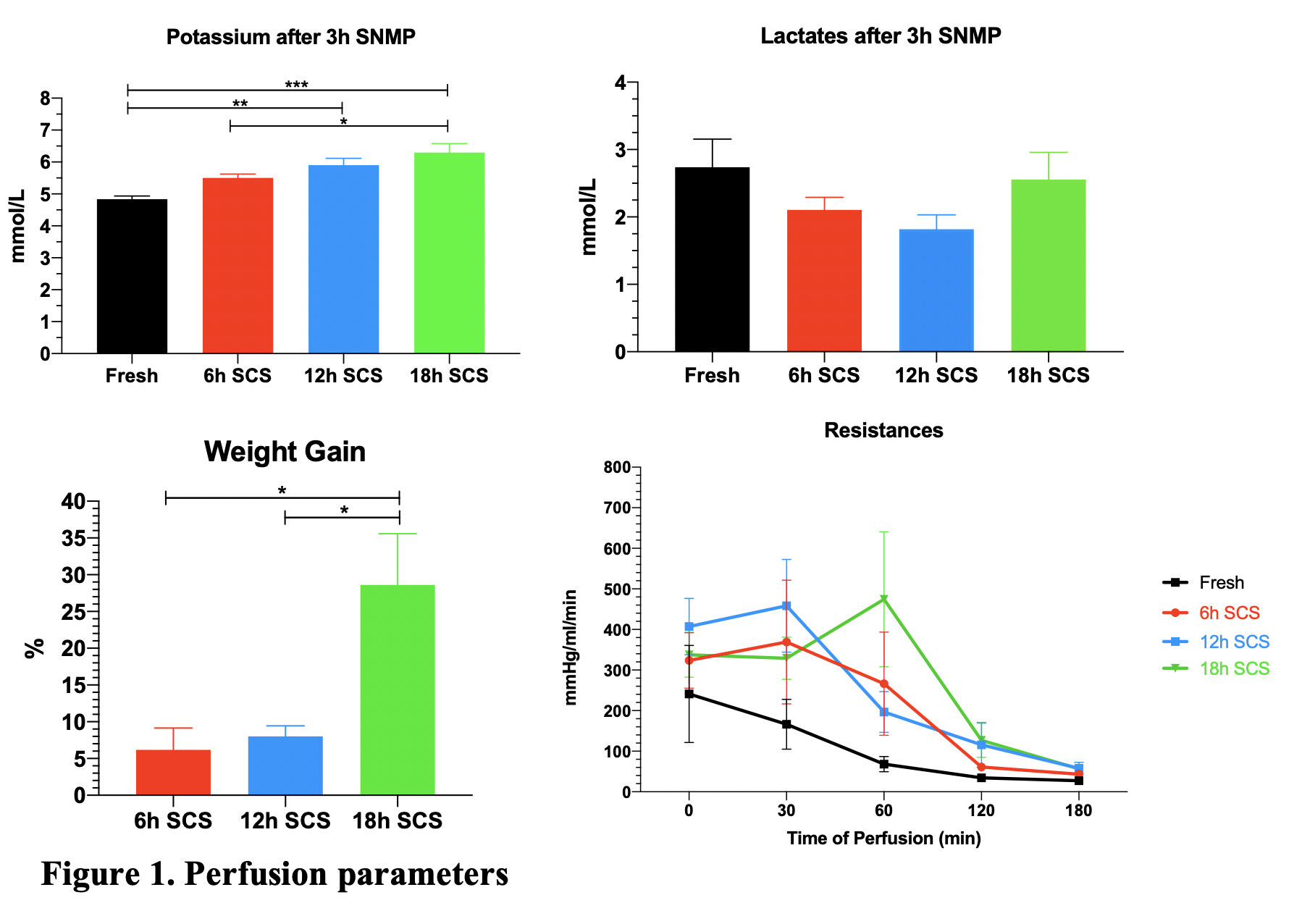Recovery After Extended Static Cold Storage Preservation Using Subnormothermic Machine Perfusion in VCA
1Massachusetts General Hospital, Harvard Medical School, Shriners Hospitals for Children, Boston, MA, 2Hôpital Européen Georges Pompidou, Paris, France
Meeting: 2021 American Transplant Congress
Abstract number: 9
Keywords: Ischemia, Machine preservation, Perfusion solutions, Preservation
Topic: Basic & Clinical Science » VCA
Session Information
Session Name: VCA: Basic and Clinical
Session Type: Rapid Fire Oral Abstract
Date: Saturday, June 5, 2021
Session Time: 4:30pm-5:30pm
 Presentation Time: 4:50pm-4:55pm
Presentation Time: 4:50pm-4:55pm
Location: Virtual
*Purpose: Vascularized composite allografts (VCA) are more sensitive to cold ischemia than solid organ transplants due to the remaining metabolism in skeletal muscle cells. In our VCA preservation studies, we observed a higher risk of epidermolysis and muscle fibrosis after extended periods of cold ischemia in a rodent transplantation model. We hypothesized that our perfusion protocol would recover the limbs before transplant and improve the clinical outcomes.
*Methods: Partial hind limbs in Lewis rats were procured and flushed with 2ml of heparin saline (100UI/ml) at room temperature then perfused with 150ml of modified Steen solution (Steen+) for 3hours (control group, n=5). In the study groups, grafts were also flushed with 5ml of ice cold HTK solution, then immersed in HTK in a sterile bag and stored in static cold storage (SCS) at 4°C for a period of 6, 12 or 18hours before the 3hrs recovery SNMP (n=4 in each group). Perfusion parameters (vascular resistances, glucose and oxygen consumption, lactates and potassium release) were assessed q30min. Biopsies were taken for histological and ATP analysis and weight gain was measured at the end of perfusion.
*Results: In all SCS groups, we were able to restore a flowrate of 0.8ml/min at the end of perfusion. Arterial resistances spiked at 30min in the 6 and 12hrs SCS groups and at 60min in the 18hrs SCS group. In each group, a constant decrease in resistance was seen after the spike and final resistances were similar to the control. After 3hrs SNMP, potassium release was significantly higher in the 12 (p=0.003) and 18hrs SCS group(p=0.0002); however, it remained in an acceptable range (<6.5mmol/L). Lactate production was not statistically different at the end of perfusion in all groups. Nonetheless, weight gain was significantly higher in the 18hrs SCS group compared to the other SCS groups. (Fig. 1)
*Conclusions: We describe a successful perfusion recovery protocol for cold ischemic VCA in a rodent model. In all groups, perfusion parameters improved throughout the experiment to reach the same level as in our control group. Our SNMP protocol with Steen+ is encouraging for VCA perfusion recovery after extended cold ischemia damage. Our results will be confirmed in vivo by transplantation in rodents.
To cite this abstract in AMA style:
Goutard M, Vries RJde, Lellouch AG, Lupon E, Pendexter C, Tessier SN, Randolph MA, Lantieri L, Cetrulo CL, Uygun K. Recovery After Extended Static Cold Storage Preservation Using Subnormothermic Machine Perfusion in VCA [abstract]. Am J Transplant. 2021; 21 (suppl 3). https://atcmeetingabstracts.com/abstract/recovery-after-extended-static-cold-storage-preservation-using-subnormothermic-machine-perfusion-in-vca/. Accessed December 28, 2025.« Back to 2021 American Transplant Congress

